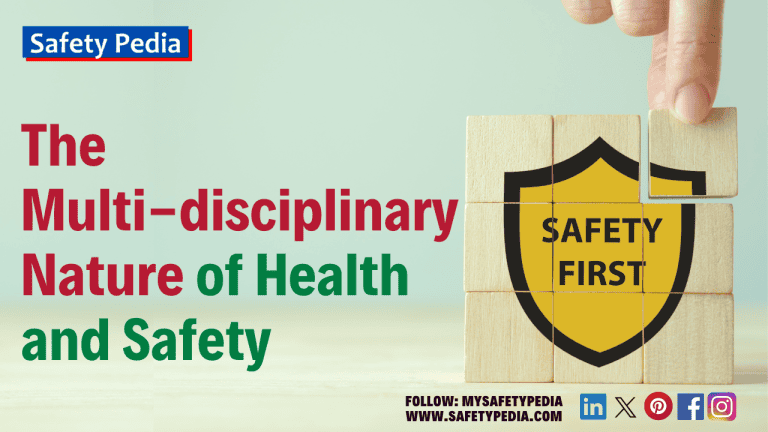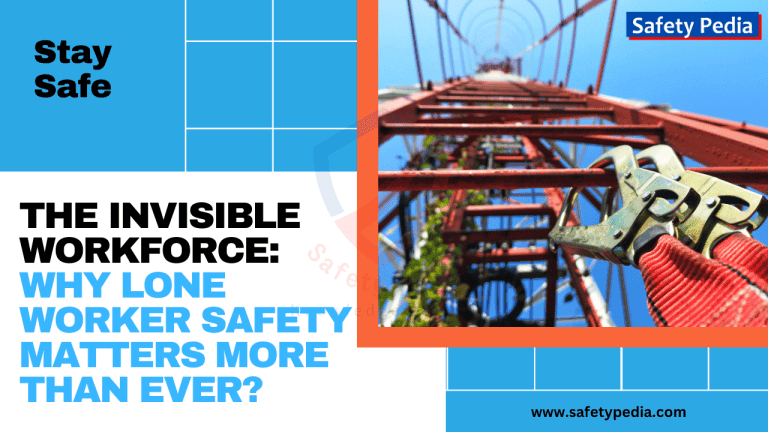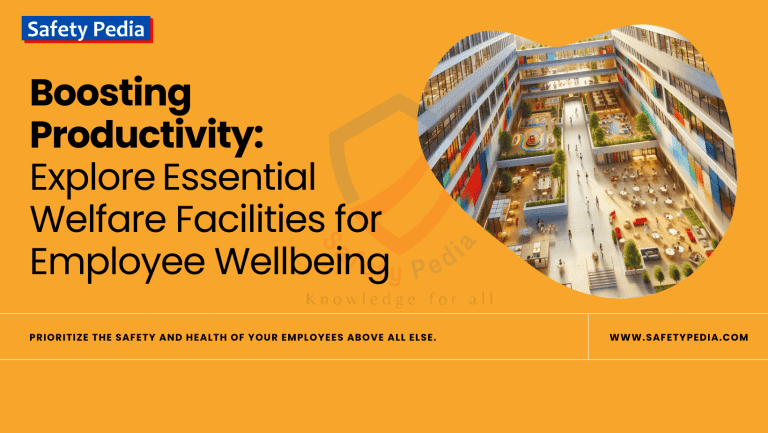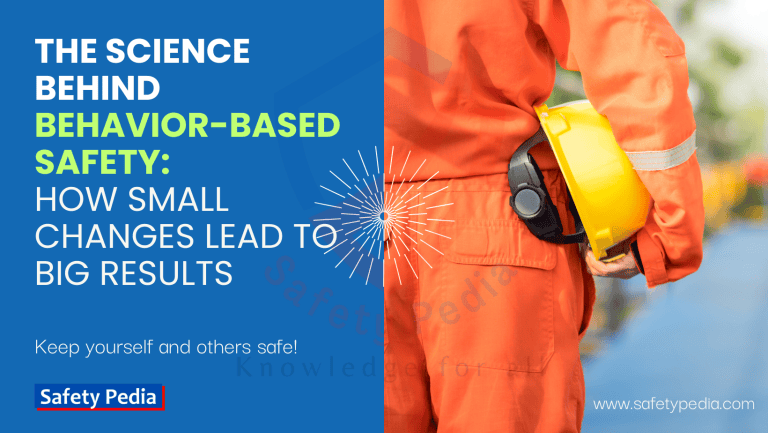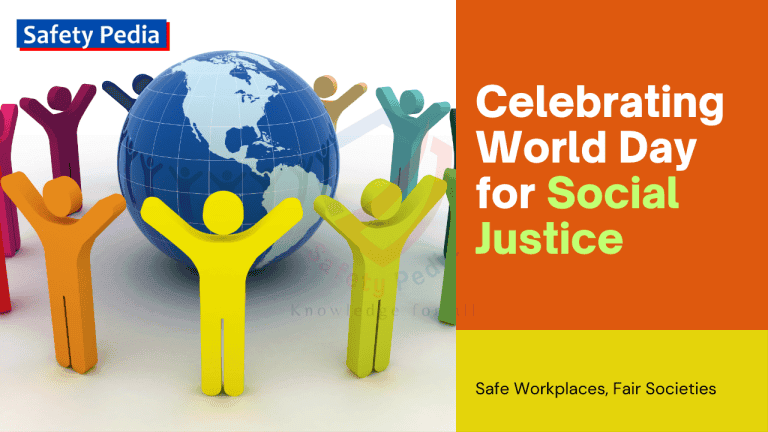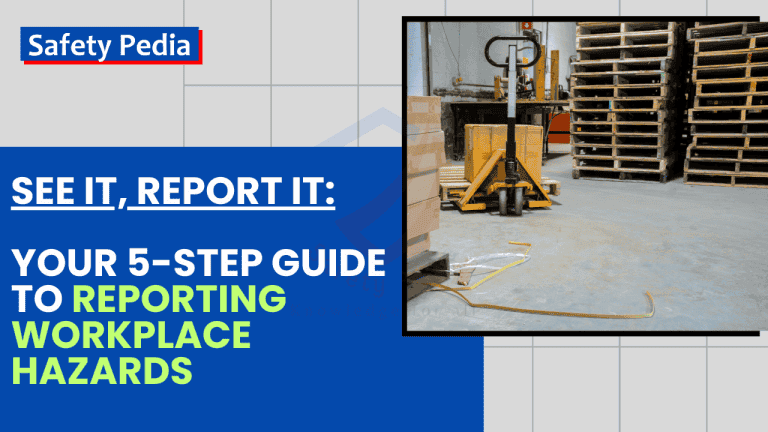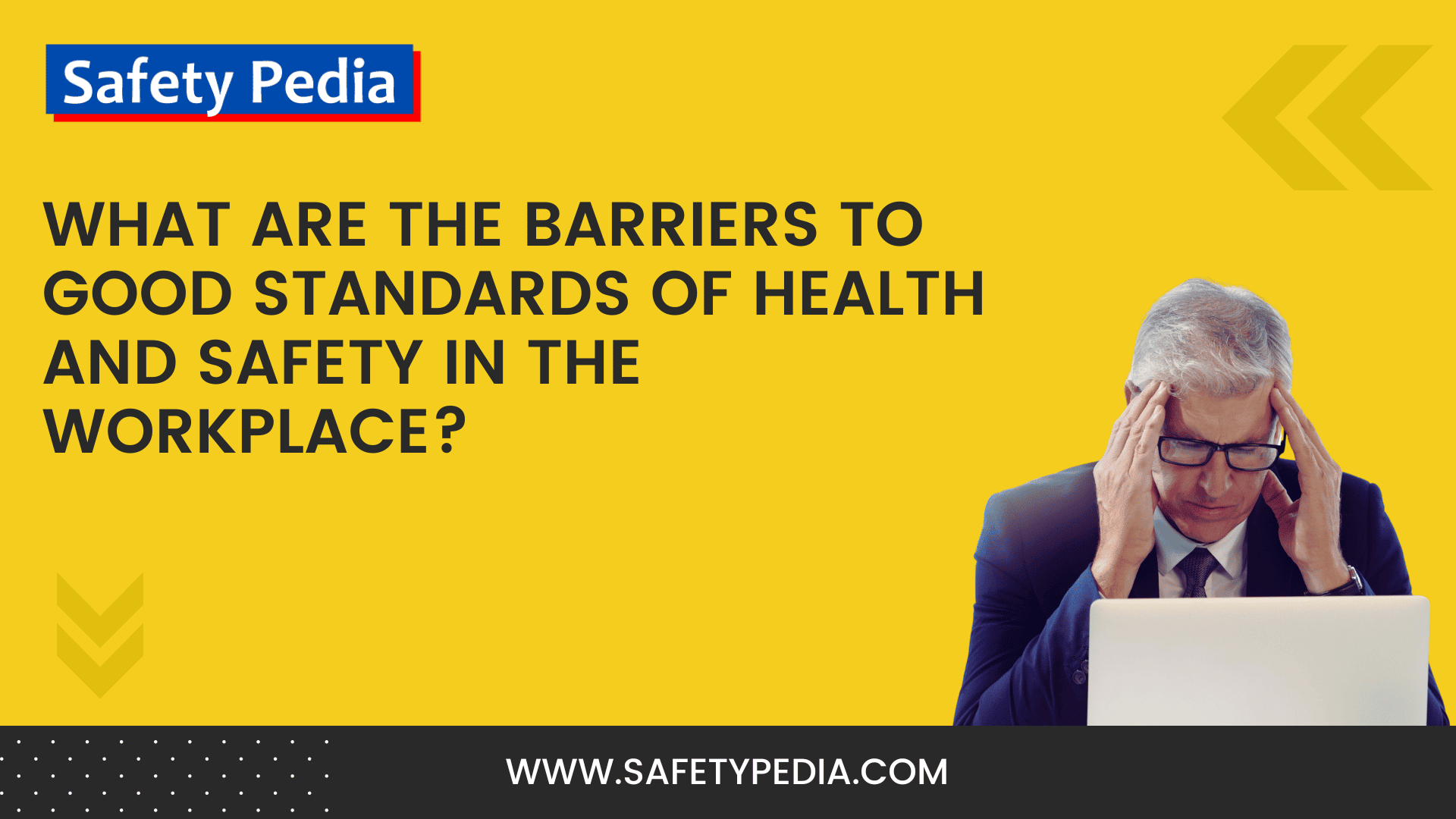
Introduction: Barriers to good standards of health and safety
Maintaining good health and safety standards is vital for any organization. It is necessary to ensure the well-being and protection of employees, customers, and the public. However, there are often barriers that can hinder the achievement of these standards. This article will explore the common barriers to achieving good health and safety standards in the workplace.
As a safety professional, our paramount concern is overcoming these barriers to achieve good health and safety standards. Overcoming barriers to occupational health and safety requires a comprehensive approach that involves identifying, recognizing, controlling and managing risk.
1. The Complexity of the Process:
Certain jobs or processes can be inherently complex, involving multiple steps, hazardous materials, equipment, or hazards. This complexity can make identifying hazards challenging. Safety risk management can be complex overall for an organization. For instance, working at heights in construction poses inherent risks that require specialized knowledge and precautions. Here are a few examples:
In the mining industry, mining operations involve various hazardous activities and conditions, including underground work, heavy machinery operation, exposure to dust, gases, and potential cave-ins. Mining operations include geotechnical challenges like unstable rock formations, ground collapses, and landslides. Mining operations often occur in complex underground or open-pit environments with multiple levels, tunnels, and confined spaces. Miners are exposed to various hazardous substances, such as coal dust, explosive atmosphere, silica, and toxic gases like methane and radon.
The complexity lies in managing and minimizing exposure to these substances through effective ventilation systems, personal protective equipment (PPE), and regular monitoring. The complex nature of these work areas can make it challenging to implement and maintain adequate safety measures, including proper ventilation, lighting, and emergency evacuation plans.
Many mining sites are located in remote or isolated areas, making emergency response and access to medical assistance challenging. The complexity of transporting injured workers, communicating effectively, and providing immediate medical care in these settings can delay response times and impact the overall safety of the workforce.
2. Competing and Conflicting Demands:
Conflicting demands occur when there are competing priorities within an organization. These conflicts can arise between productivity goals, financial constraints, and safety requirements. The pressure to meet deadlines or production targets can overshadow the importance of health and safety, leading to compromised standards. Excessive workloads, tight deadlines, and time pressures can lead to shortcuts or negligence of safety procedures. When individuals are overwhelmed with tasks, they may prioritize productivity over safety, compromising standards.
Conflicting and competing demands can create barriers to achieving good health and safety standards. Following are the four different aspects of conflicting and competing demands:
- Time Constraints
- Budget Constraints
- Expertise
- Different Standards
Time constraints:
Time constraints refer to situations where there is pressure to complete tasks or projects within limited time frames, often compromising health and safety standards. When there is limited time to prioritize and implement health and safety measures due to competing demands for productivity or meeting deadlines, focus on health and safety often weakens. Here are a few examples:
In the construction industry, there may be tight project deadlines due to contractual obligations or financial penalties for delays. As a result, there might be pressure on workers to rush through safety procedures or skip necessary safety checks, leading to an increased risk of accidents or injuries. I experienced this pressure when the CEO visited a project and said he wanted this project to be completed within 10 days. In contrast, it requires more days to complete it safely.
Healthcare professionals may face time constraints in a healthcare setting due to a high patient workload and limited staffing. As a result, they may feel pressured to prioritize patient care, overtaking necessary safety precautions, such as proper hand hygiene or using personal protective equipment (PPE), increasing the risk of healthcare-associated infections or occupational hazards.
Budget Constraints:
Budget issues arise when there is limited financial allocation for health and safety initiatives, leading to conflicts between cost considerations and the investment required for adequate safety measures. Based on my experience, organizations tend to prioritize cost-cutting measures during economic downturns. Unfortunately, this often leads to an undesirable moment: reduced budgets allocated to health and safety.
It is disheartening to witness the impact of such decisions on the well-being of employees and the overall safety of the work environment. Neglecting adequate investments in health and safety measures can have severe repercussions, ranging from increased accidents and injuries to long-term health issues among workers.
For example: A manufacturing company may have a limited safety budget and prioritize spending on production equipment or other operational aspects. This could result in inadequate investment in safety training, personal protective equipment, or safety infrastructure, increasing the likelihood of accidents or occupational hazards. A manufacturing company may face budget constraints and decide between investing in safety equipment or machinery upgrades. If the company prioritizes machinery upgrades due to production demands, it may compromise on providing adequate safety equipment, putting workers at risk of accidents or injuries.
Inadequate Resources and Infrastructure:
Insufficient resources and infrastructure can be significant barriers to good health and safety practices. This includes inadequate safety equipment, outdated machinery, poor maintenance, and a lack of safety signage. Limited availability of equipment, such as personal protective equipment (PPE), safety tools, and maintenance equipment, can hinder the implementation of proper safety measures. Without the necessary resources, ensuring a safe working or living environment becomes challenging.
Socio-economic Factors:
Socio-economic factors encompass various external influences affecting an organization’s ability to achieve good health and safety standards. These factors include limited financial resources, time constraints, and competing priorities. Organizations operating in economically disadvantaged areas or with tight budgets may face challenges in implementing robust health and safety practices.
For example, In industries with high labour turnover, such as the hospitality sector, investing in health and safety measures may be perceived as an additional financial burden. However, the cost of workplace accidents and injuries can be far more significant. To overcome socio-economic barriers, organizations should emphasize the long-term cost-saving benefits of investing in health and safety, seek external funding or grants, and explore collaborative partnerships to share resources and knowledge.
Lack of Expertise:
The expertise barrier arises when there is a lack of expert knowledge or skills in health and safety management, which can hinder the effective implementation and maintenance of safety standards. Here are a few examples:
Small businesses may lack the expertise or resources to employ dedicated health and safety professionals. As a result, ensuring safety falls on employees who may not have the necessary training or experience. This can result in inadequate risk assessments, improper use of equipment, or insufficient safety protocols, leading to an increased risk of accidents or injuries for workers.
Smallholder farmers may lack expertise in pesticide handling and safety practices in the agricultural sector. Without proper knowledge or training, they may misuse pesticides, neglect appropriate protective measures, or mishandle chemicals, leading to health risks for themselves and the environment.
Different Standards:
Different standards refer to situations where conflicting regulations or standards exist within an industry or across various jurisdictions. International companies operating in multiple countries may face challenges navigating and complying with varying health and safety regulations. The differences in safety standards, requirements, or cultural norms can create complexities in implementing consistent safety practices, leading to inconsistencies and potential gaps in compliance.
Here’s an example based on conflicting standards as a barrier to health and safety, specifically related to permissible noise levels set by the Occupational Safety and Health Administration (OSHA) and the Time-Weighted Average (TWA) recommended by the National Institute for Occupational Safety and Health (NIOSH).
In a manufacturing facility, the conflicting standards regarding permissible noise levels set by OSHA and NIOSH pose a significant challenge in maintaining good health and safety standards. OSHA sets the permissible noise exposure limit at 90 decibels (dB) for an 8-hour work shift. At the same time, NIOSH recommends a lower TWA limit of 85 dB for the same duration.
Suppose the manufacturing facility follows OSHA guidelines and allows noise levels up to 90 dB for an 8-hour shift. However, NIOSH’s recommendation of 85 dB as the TWA limit suggests that prolonged exposure to noise levels above this threshold can lead to irreversible hearing loss and other adverse health effects. This discrepancy creates difficulty for the facility management in setting appropriate noise control measures and ensuring the safety and well-being of their employees.
To address this issue, facility management decides to conduct noise monitoring assessments using specialized equipment to accurately measure the noise levels across different work areas. The results reveal that certain facility sections consistently exceed the NIOSH-recommended TWA limit of 85 dB while remaining below OSHA’s permissible limit of 90 dB.
Management realizes that although they comply with OSHA standards, they must take additional measures to protect their employees’ hearing health. They consult with occupational health experts and conduct further research to understand the potential long-term effects of noise exposure on their workforce.
By proactively addressing the conflicting standards and prioritizing the well-being of their employees, the facility management demonstrates its commitment to maintaining high health and safety standards. Their technical approach, supported by scientific research and consultation with experts, ensures that the employees are protected against noise-induced hearing loss and potential health risks, even if it exceeds the OSHA-permissible limit but falls within the more stringent NIOSH recommendations.
This example highlights the importance of considering different standards, evaluating potential risks, and taking proactive measures to ensure the highest possible health and safety standards, even when conflicting guidelines exist.
Compliance Challenges and Regulatory Complexity:
Complex and ever-evolving health and safety regulations can pose challenges for organizations. Compliance with legal requirements can be demanding, especially for businesses operating in multiple jurisdictions. Failure to understand and comply with these regulations can result in legal consequences and compromised safety standards.
To navigate this barrier, organizations should prioritize staying current with relevant health and safety regulations and standards. This can be achieved through regularly monitoring regulatory updates, engagement with industry associations, and partnering with safety professionals or consultants specialising in compliance. By proactively addressing regulatory requirements, organizations can ensure they are on the right track toward good health and safety practices.
3. Human Factors:
Human factors refer to the interactions between individuals, tasks, and their surrounding environment that can impact health and safety. These factors include fatigue, stress, distraction, and inadequate training, all of which can contribute to human error and accidents. Understanding and addressing human factors is crucial for preventing incidents in the workplace.
In a healthcare setting, healthcare professionals working long shifts may experience fatigue, leading to lapses in concentration and increased risks for patients and themselves. Organizations can address this barrier by implementing fatigue management strategies, providing adequate rest breaks, and promoting a supportive work environment encouraging open dialogue about mental well-being. Regular training and ongoing professional development can also enhance skills and competencies, reducing the likelihood of errors caused by inadequate training.
Psychological Barriers:
Psychological barriers refer to individual beliefs, attitudes, and perceptions that can hinder the adoption of good health and safety practices. These barriers include fear, resistance to change, and a lack of risk perception. Overcoming psychological barriers is crucial for promoting a safety-conscious culture within an organization.
In a high-pressure sales environment, employees may prioritize meeting targets over safety precautions, disregarding health and safety measures. Overcoming this barrier requires promoting open communication, encouraging employees to voice their concerns, and clearly explaining the benefits of adhering to safety protocols. Training programs that address psychological barriers and emphasize the importance of personal responsibility can help change attitudes and behaviors.
Behavioral Issues:
Behavioral issues can be a significant barrier to health and safety, such as non-compliance, carelessness, or lack of awareness, which can significantly hinder good health and safety standards. These issues often stem from individual attitudes and perceptions toward safety, leading to risky behaviors and increased accident rates. These issues pertain to individuals’ actions, attitudes, and choices that can undermine the establishment and maintenance of good standards.
For example, in a warehouse setting, employees may become complacent about wearing required PPE, such as safety helmets or gloves, due to discomfort or a belief that the hazards are minimal. This behavior increases the likelihood of injuries in case of accidents or falling objects. Organizations can address this barrier by conducting regular safety training sessions, implementing strict enforcement of safety policies, and creating a culture that promotes personal responsibility and accountability for safety. Here’s an explanation of how behavioral issues act as barriers to health and safety:
- Non-compliance with safety procedures
- Risk-taking behaviors
- Lack of hazard perception and reporting
- Poor safety attitudes and culture
- Demotivation affecting safety performance
- Good safety practices are not encouraged
- Not following safety instructions
Non-compliance with safety procedures
One of the common behavioral issues is the failure to comply with established safety procedures and protocols. This can include neglecting to wear personal protective equipment (PPE), bypassing safety precautions, or engaging in risky behaviors disregarding safety guidelines. Non-compliance increases the risk of accidents, injuries, and occupational illnesses.
For example, an employee in a construction site refusing to wear a hard hat or safety harness despite the clear requirement to do so exposes themselves to the risk of head injuries or falls, as well as setting a poor example for others.
Risk-taking behaviors
Some individuals may exhibit risk-taking behaviors, disregarding safety measures to complete tasks quickly or for personal convenience. These behaviors can include shortcuts, ignoring warning signs, or taking unnecessary risks that endanger their safety and that of others.
For example, a worker operating heavy machinery at high speeds or without proper training disregards safety protocols and increases the likelihood of accidents or equipment failures.
Lack of hazard perception and reporting
Behavioural issues can manifest as a lack of hazard perception, where individuals fail to recognise potential risks or hazards in their environment. This can lead to delays in reporting safety concerns or inadequate response to emerging hazards, allowing them to persist and pose threats to health and safety.
For example, An office worker failing to notice or report a frayed electrical cord poses a fire hazard, potentially endangering the entire workplace.
Poor safety attitudes and culture
Behavioral issues can also stem from poor safety attitudes and a negative safety culture within an organization. When individuals do not prioritize safety, fail to take responsibility for their own safety, or do not actively participate in creating a safe environment, it undermines the overall health and safety standards.
For example, employees make jokes about safety measures or mock colleagues who adhere to safety protocols, creating a culture of nonchalance or resistance towards safety practices.
Demotivation affecting safety performance
Demotivation or low morale among employees can have a detrimental effect on safety performance. When individuals feel disengaged, unappreciated, or overwhelmed, their motivation to follow safety procedures and maintain good standards may decrease. This can lead to increased risk-taking behaviors and decreased overall safety performance.
For example, Employees who are consistently overworked, facing excessive stress, or lacking recognition for their efforts may become demotivated, resulting in decreased attention to safety practices and an increased likelihood of accidents.
Good safety practices are not encouraged.
In some cases, organizations may inadvertently discourage good safety practices by not providing adequate resources, recognition, or support for safety initiatives. When employees perceive a lack of emphasis on safety or witness others being rewarded for unsafe behaviors, it can undermine their motivation to prioritize safety.
For example, if employees observe that production targets are consistently prioritized over safety concerns, they may feel discouraged from dedicating time and effort to follow safety procedures.
Not following safety instructions.
Failure to follow safety instructions or taking a casual approach to safety protocols is a behavioral issue that significantly impacts health and safety. This can occur due to a lack of understanding, complacency, or a disregard for the potential consequences.
For example, a laboratory technician neglecting to wear gloves while handling hazardous chemicals, despite explicit instructions and training on proper safety protocols, puts themselves at risk of chemical exposure or burns.
Lack of Awareness and Training:
One of the significant barriers to achieving good health and safety standards is a lack of awareness and inadequate training. Many employees may not fully understand the potential hazards in their work environment or the proper safety procedures to follow. When individuals are unaware of the potential hazards and risks, they may not prioritize safety measures. Insufficient training can result in increased risks and accidents.
To overcome this barrier, organizations should prioritize comprehensive health and safety training programs. These programs should cover hazard identification, risk assessment, emergency procedures, proper use of personal protective equipment (PPE), and safe work practices. Regular refresher courses and ongoing awareness campaigns can help reinforce the importance of health and safety in the workplace.
Resistance to change:
Resistance to change is another barrier to achieving good health and safety standards. Implementing new safety practices or technologies may be met with scepticism or reluctance, hindering progress. Some individuals may resist changes or improvements in health and safety practices due to a fear of disrupting established routines or additional costs involved. This resistance can hinder the adoption of new safety measures. Effective communication and change management strategies are crucial in addressing this barrier. Explaining the benefits and importance of latest safety initiatives, involving employees in the decision-making process, and providing support during the transition can help overcome resistance and facilitate the adoption of safer practices.
Lack of Employee Engagement:
A key barrier to achieving good health and safety standards is a lack of employee engagement. When employees do not feel actively involved in safety programs or initiatives, it becomes challenging to cultivate a safety-conscious culture. Encouraging open communication, actively seeking employee feedback, and involving workers in decision-making can help overcome this barrier. By empowering employees to take ownership of their safety and promoting a collaborative approach, we can build a workplace where everyone feels responsible for their well-being.
Over time, individuals may become less attentive to potential hazards or develop a “it won’t happen to me” mentality. This mindset can lead to increased risks and a disregard for safety protocols.
To address this issue, organizations should encourages a culture of safety that encourages active engagement from all levels of the workforce. This can be achieved by involving employees in safety committees, encouraging open communication regarding safety concerns, and recognizing and rewarding proactive safety behaviors. Regular safety meetings and toolbox talks can also serve as platforms to reinforce the importance of vigilance and adherence to safety standards.
Workers not involved in decision-making processes may feel disconnected from safety initiatives, leading to reduced compliance.
Language and cultural barriers:
In diverse work environments, language and cultural differences can pose barriers to effective communication and understanding of health and safety practices. Misinterpretation of instructions or cultural norms may result in unsafe behaviors.
Poor organizational culture:
A negative safety culture within an organization can be a significant barrier to achieving good health and safety standards. When there is a lack of commitment, accountability, and communication regarding safety practices, it can lead to increased risks and accidents.
4. Management Issues:
Various management issues hinder the achievement of good standards of health and safety. Here are some common barriers:
Lack of Management Commitment:
A lack of commitment from management is a significant barrier that undermines establishing good health and safety standards. When leaders fail to prioritize safety, employees may perceive it as trivial, leading to negligence and increased risk. It is essential for management to actively demonstrate their commitment to safety by allocating sufficient resources, establishing clear policies and procedures, and holding everyone accountable. By promoting a safety culture from the top down, organizations can ensure safety remains at the forefront of every decision and action.
Lack of enforcement:
Weak enforcement of health and safety regulations can undermine the establishment of good standards. When there are no consequences for non-compliance or violations, individuals may neglect safety protocols, putting themselves and others at risk.
Insufficient Training and Education:
Another barrier is the absence of comprehensive training and education programs. Employees are more susceptible to accidents and injuries without proper knowledge and understanding of potential hazards and safe work practices. Providing regular training sessions, workshops, and educational resources can equip employees with the necessary skills to identify risks, mitigate hazards, and respond effectively in emergencies. By investing in employee development, we can empower them to prioritize safety as an integral part of their daily routine.
Do these barriers vary from country to country?
Yes, the barriers to achieving good standards of health and safety can vary from country to country due to several factors, including cultural, economic, regulatory, and social differences. Here are some ways in which these barriers can differ:
Legal and regulatory frameworks: Each country has its own laws, regulations, and standards regarding health and safety. These frameworks’ effectiveness and enforcement can vary, impacting the overall safety culture and compliance levels.
Socioeconomic conditions: Economic factors, such as the level of development, income disparities, and access to resources, can influence the barriers to achieving good health and safety standards. Developing countries may face additional challenges due to limited financial resources and infrastructure.
Cultural norms and attitudes: Cultural factors play a significant role in shaping attitudes towards health and safety. Countries may have varying cultural norms and values that impact how individuals perceive and prioritize safety. These cultural differences can influence compliance with safety regulations and adopting safe practices.
Education and awareness levels: The level of education and awareness about health and safety can differ between countries. Higher levels of education and awareness generally contribute to better safety practices. In some regions, limited access to education and information may hinder achieving good standards.
Workforce demographics: The composition of the workforce, including factors like age, gender, and skill levels, can vary across countries. These demographic variations can impact the understanding and implementation of health and safety measures and the specific risks associated with different industries.
Industrial practices and sector-specific challenges: Different countries may have dominant industries, and each sector can present unique health and safety challenges. For example, the safety risks in a manufacturing industry may differ from those in the service sector or agriculture. These sector-specific challenges can influence the barriers to achieving good standards.
Government commitment and resources: Government commitment and allocation of resources to ensure health and safety can differ. Some countries may prioritize safety regulations, inspections, and enforcement, while others may have limited resources or face political challenges affecting their ability to effectively promote and enforce safety standards.
Considering these country-specific factors is crucial when developing strategies and interventions to address barriers to achieving good health and safety standards. Local context, cultural sensitivities, and tailored approaches can help overcome these barriers effectively in different countries.
How can we remove these barriers and improve health and safety in the workplace?
As a safety professional, your commitment to achieving good health and safety standards is commendable. Overcoming barriers in this field requires a comprehensive approach that involves identifying, addressing, and managing various challenges. Here are some common barriers and strategies to overcome them:
Lack of Awareness: Many individuals may not fully understand the importance of health and safety or be aware of potential hazards. To overcome this, you can implement awareness campaigns, training programs, and regular communication to educate and engage employees and management.
Resistance to Change: Resistance to new safety protocols or procedures can hinder progress. Effective change management strategies, including clear communication, involvement of stakeholders, and highlighting the benefits of safety improvements, can help overcome resistance and promote a positive safety culture.
Insufficient Resources: Limited budget, staff, or equipment can pose challenges. Conduct a thorough resource assessment to identify gaps and prioritize allocation accordingly. Seek management support for necessary investments in safety measures and equipment.
Compliance Issues: Non-compliance with safety regulations and standards can impede progress. Stay updated with relevant laws, conduct regular audits, and implement robust enforcement mechanisms to ensure compliance. Train and support employees to ensure they understand and follow safety protocols.
Organizational Culture: An unsupportive or indifferent organizational culture can hinder safety efforts. Promote a safety culture by integrating it into core values, establishing clear expectations, recognizing and rewarding safe behaviors, and encouraging open communication channels for reporting concerns and incidents.
Lack of Competence: Insufficient knowledge or skills can impede safety initiatives. Invest in training programs to enhance employees’ competency levels, provide opportunities for professional development, and encourage certifications and qualifications in safety management.
Communication Barriers: Ineffective communication channels or language barriers can hinder understanding and implementation of safety measures. Establish clear communication channels, provide multilingual resources if necessary, and ensure that information is disseminated effectively to all stakeholders.
External Factors: Economic, political, or environmental factors can influence safety standards. Stay updated on external factors impacting safety and adapt your strategies accordingly. Engage with relevant regulatory bodies, industry associations, and stakeholders to stay informed and collaborate on safety initiatives. Remember, continuous improvement is crucial in health and safety. Regularly evaluate the effectiveness of your strategies, seek feedback from employees, and adapt your approaches as needed. By addressing these barriers, you can make significant progress in achieving and maintaining good health and safety standards.
Conclusion:
Creating a safe workplace requires a collaborative effort. Engaging employees, providing comprehensive training, demonstrating management commitment, and addressing resistance to change are crucial. Remember, investing in safety not only protects employees but also enhances productivity and boosts company morale. Let’s break down barriers together and build a safety-first culture.
Good health and safety practices are vital for every organization. To overcome challenges like complex tasks, conflicting demands, and behavioral issues, organizations must implement tailored solutions. This includes specialized training, integrating safety into decision-making, and cultivating a strong safety culture. By prioritizing employee well-being, organizations create a safer, more productive, and sustainable work environment.
References:
Your one click can make a difference
Keep sharing and promoting health and safety awareness!
Related posts:
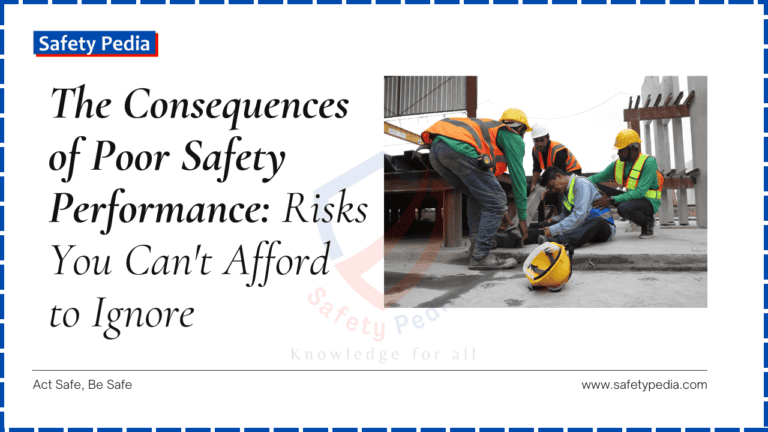
The Consequences of Poor Safety Performance: Risks You Can’t Afford to Ignore
Discover the potential consequences of poor safety performance in the workplace and how they can negatively impact both employees and the company as a whole.
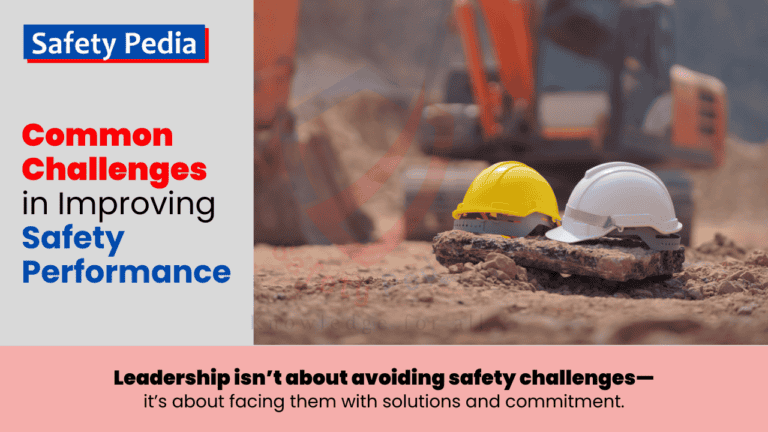
18 Common Challenges in Improving Safety Performance at Work
Discover 18 common challenges in improving safety performance at work. Learn how to overcome these obstacles for a safer workplace.
20 Best Ways to Improve Safety Performance in the Workplace
Discover the 20 best ways to improve safety performance at workplace, including actionable strategies for hazard prevention, employee engagement, safety training, and cultivating a culture of well-being.
Join Our Safety Community!
Stay informed with the latest tips and insights on occupational health, safety, and the environment.
